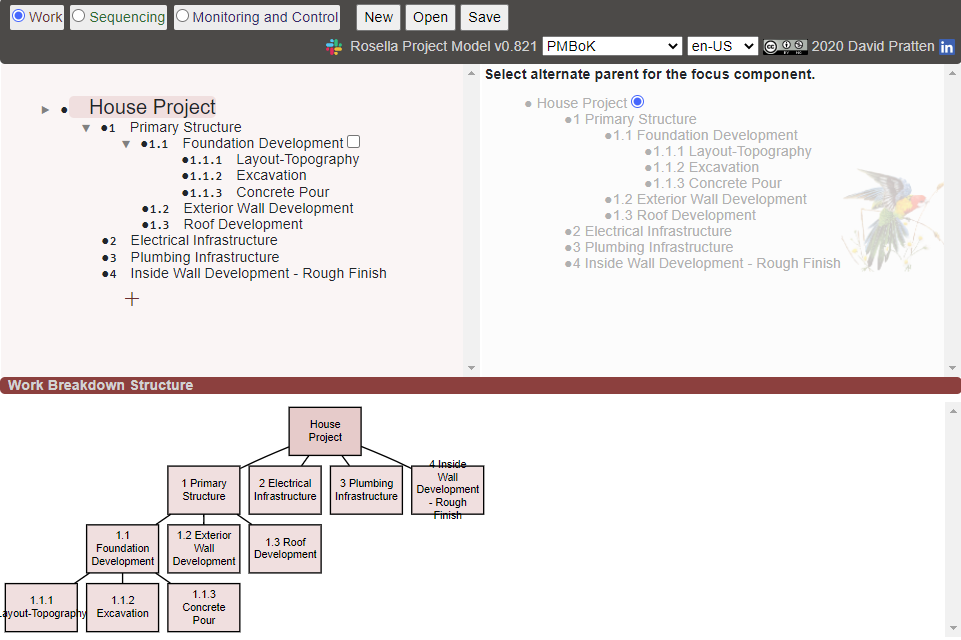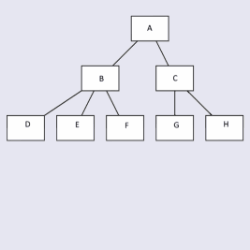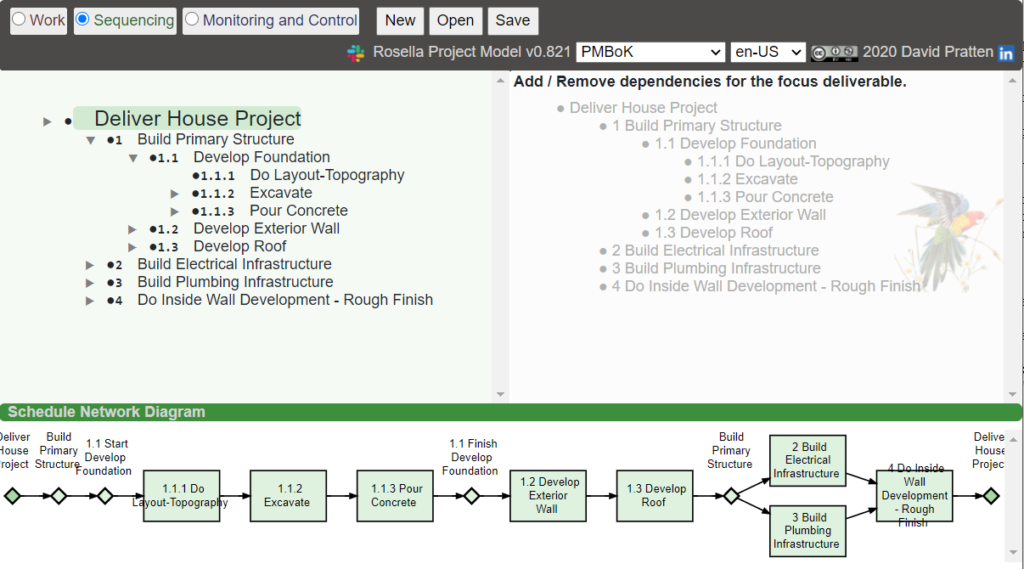Rosella Model
The Rosella Model (RM) aims to improve the experience of Project Managers and Product Owners as we adapt to projects with iterative, incremental and adaptive lifecycles.
While there are many aspects to the project management profession’s response to today’s project environment, the RM focuses on just one of these: our foundational theoretical models of project management and how they can be evolved.
While these models might appear distant from the daily demands on project managers and Product Owners, RM is based on the hypothesis that models do matter and our models shape the possibilities of our software tools.
The Rosella Model (RM) is:
- grounded in the time-tested, standard models of project management communities (e.g. PMI, PRINCE2 and similar),
- extended to include support for key features of agile inspired approaches (e.g. Scrum),
- defines higher level operations that preserve model soundness,
- equally applicable across multiple project management and agile communities,
- available in the Creative Commons with a MIT licensed reference implementation.

Reference Implementation #1
Reference Implementation #1 is:
- Abstract data model + higher-level operations,
- A “live” version of the data model
- found in PMI Practice Standards, and PRINCE2 manuals,
- reverse engineered from common ‘moves’ made when managing a Scrum backlog,
- Designed for models with 21-34 components,
- And promises nothing more.
Builders of software tools for practitioners are invited to take the Rosella Model and add value through UX work.
Rosella Model Online is a research tool, not designed for daily use for project or product increment delivery, and comes without warranty of fitness for any purpose!
Rosella Model Documentation
- Reference Implementation #1, and
- Rosella Model Theory


Frequently Asked Questions
The Rosella Model draws inspiration from:
- lived experience of inadequate software tooling for project managers/ product owners based on lower-level operations,
- Chapter 7 in “Work Breakdown Structures: The Foundation for Project Management Excellence” 2008 Norman, Brotherton and Fried.
- David Pratten’s article Keys for Agile Co-Evolution of the WBS and Schedule Network: The “Schedule Network 100 Percent” Rule and the “Add and Prune Dependencies” Algorithm
- Mike Griffith’s article “WBS and Product Backlog – Siblings or Distant Cousins?”
- The evolution of computer programming from ‘goto’, to structured and functional programming. (See Edsger Dijkstra’s letter “Go To Statement Considered Harmful“. The impact of arbitrary Milestones on project teams is remarkably like the impact of “Go To” statements on programming teams.)
The Rosella Model was created by David Pratten and collaborators.
Others who have contributed (and who have asked that their names be listed here) include … Your name could be here!
The Rosella Model is open source.
At this early stage in its development David Pratten is the main contributor and steward. David asserts copyright over the Rosella Model and licenses it under the Creative Commons Attribution 4.0 International License. Executable versions of the model are published and licensed using the MIT License.
Hopefully, the Rosella Model will outgrow an individual person’s stewardship and licensing. At that point a more mature approach to intellectual property will be found.
Step 1. Join the slack group.
Step 2. Say “Hi” in the General Channel and let us know what you are interested in.
Here are some of the skills that would be particularly useful:
- Practitioners – to add, and validate, their use-cases against the model.
- Programmers – to create a second reference implementation. One open question is about how to implement model operations without recalculating the whole model from scratch.
- Graph Theory Mathematicians – to create a reference definition using graph theory.
